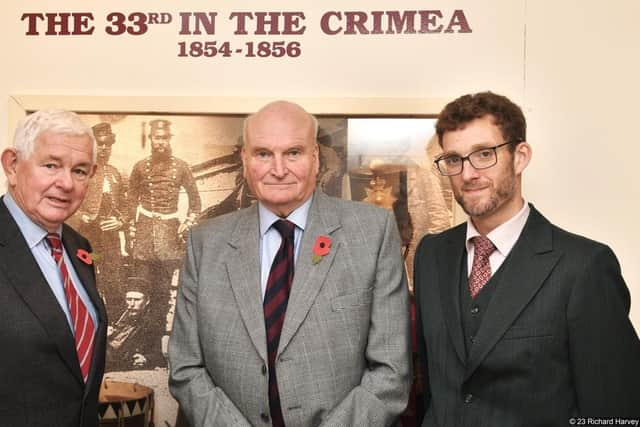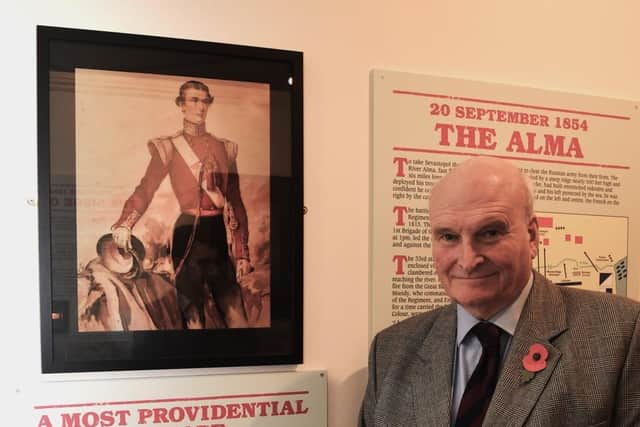Crimean War display re-opens at Duke of Wellington’s Regiment Museum
and live on Freeview channel 276
The formal opening was performed on Saturday, November 4 by John Carr-Ellison, the great-great-great grandson of Captain John Carr, who was a young officers in the Regiment, then the 33rd of Foot, throughout the Crimean War.
He wrote a splendid diary recounting the campaign and his portrait forms part of the new display.
Advertisement
Hide AdAdvertisement
Hide AdMajor David Harrap, Chairman of the Regimental Museum Trustees, welcomed over 40 guests to the opening including Councillor Jenny Lynn, responsible for culture and heritage within Calderdale Council and Sarah Richardson, the assistant Director within Calderdale Council who oversees museum services.


This was followed by Colonel Mark Lodge, who spoke on the 33rd’s part in the Crimean War where it served throughout the land war. The war lasted from 1854 to 1856 and was fought by the British, French, Piedmont/Sardinia (now part of Italy) and the Ottoman Empire to contain Russian plans imperial expansion into the Black Sea and beyond.
It was the first war to be fought after the introduction of the telegraph meaning reports on the war were quickly sent to home newspapers and therefore, the severe conditions under which soldiers served became a major political issue leading to major changes in the military and in the care of soldiers.
Highlights of the new displays exhibition include the jacket of Corporal Dagley, 33rd Foot, who was wounded in the war, as well as the medals of Private Patrick McGuire DCM which the museum has recently acquired.
Advertisement
Hide AdAdvertisement
Hide AdPatrick McGuire was famously put forward by Lord Raglan for the award of the Victoria Cross but this was personally declined by Queen Victoria on the grounds that by seizing of his weapon while being escorted off the battlefield and then despatching his captors his action “was one of very doubtful morality, and if pointed out by the Sovereign as praiseworthy, may lead to the cruel and inhumane practise of never making prisoners, but always putting to death those who may be overpowered for fear of their rising over their captors”.


After the exhibition opened John Spencer, a museum trustee, gave a fascinating talk on two recent acquisitions in the display; the Pattern 53 Rifled Musket and an absolutely pristine example of the Adams Revolver.
The Pattern 53 Rifled Musket was the newly introduced personal weapon for soldiers in the war which for the first time allowed soldiers to fire accurately out to up to more than 600 yards and had a dramatic impact on the fighting.
The Adams Revolver was designed and made in Britain was the first self cocking revolver making it much quicker to fire than the American Colt revolvers. It was the self-purchased weapon of choice for many officers.